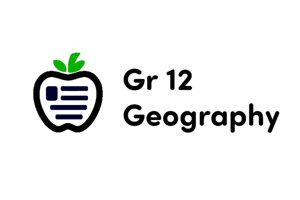Podcast
Questions and Answers
What does Walter Christaller's Central Place Theory seek to explain?
What does Walter Christaller's Central Place Theory seek to explain?
- Size and distribution of settlements (correct)
- Cultural influences
- Population growth
- Migration patterns
What is Urban Hierarchy?
What is Urban Hierarchy?
A ranking of settlements according to their size and function.
What defines a hamlet?
What defines a hamlet?
A low order settlement providing basic services.
What characteristics define a village?
What characteristics define a village?
What is a town?
What is a town?
What defines a city in terms of settlement characteristics?
What defines a city in terms of settlement characteristics?
What is a hinterland?
What is a hinterland?
What is the threshold in economic terms?
What is the threshold in economic terms?
What does range refer to in terms of consumer behavior?
What does range refer to in terms of consumer behavior?
What are low order goods and services?
What are low order goods and services?
What are high order goods and services?
What are high order goods and services?
What assumptions did Christaller make in Central Place Theory?
What assumptions did Christaller make in Central Place Theory?
What does the Rank-Size Rule state?
What does the Rank-Size Rule state?
What are Primate Cities?
What are Primate Cities?
Study Notes
Central Place Theory
- Developed by Walter Christaller to explain the size and distribution of settlements based on their economic reach (centrality).
- Model conclusions highlight an orderly hierarchy of urban places, evenly spaced according to size and function.
- Larger cities are spaced farther apart than smaller towns, reflecting their significant economic influence.
Urban Hierarchy
- Ranks settlements based on size and complexity of functions.
- The hierarchy is influenced by population size, reflecting different service availability and dependence.
Settlement Types
- Hamlet: Basic services, such as convenience stores; classified as low-order settlements offering lower order goods.
- Village: Higher service variety with more specialization and selection than hamlets.
- Town: Larger than villages, featuring extensive service offerings like superstores and specialized medical options.
- City: Significant specialization and extensive hinterland, providing numerous specialized goods and services.
Hinterland
- Also known as service areas or trade areas; it defines the economic reach of a settlement.
- Cities possess the largest hinterlands, indicating their role in providing specialized services.
Economic Concepts
- Threshold: Minimum number of potential customers required to sustain a business.
- Range: Distance consumers are willing to travel for goods and services.
Goods and Services
- Low Order Goods: Perishable items needed frequently, typically have shorter ranges.
- High Order Goods: Costly items acquired less often, generally have longer ranges.
Central Place Theory Assumptions
- Assumes a flat, uniform landscape with no physical barriers, and an equal distribution of transportation networks and soil fertility.
- Limitations arise in areas with varied topography or established highway systems because the model does not account for these factors.
Rank-Size Rule
- Demonstrates an inverse relationship between a city's size and its rank in the urban hierarchy.
- Indicates a statistical regularity in city-size distributions, where smaller settlements correlate to fractions of larger ones (e.g., town is half the size of a city).
Primate Cities
- Primate cities hold a dominant position, often containing half of the nation's population and more than twice the size of the next largest city.
Studying That Suits You
Use AI to generate personalized quizzes and flashcards to suit your learning preferences.
Description
Test your understanding of Central Place Theory and the urban hierarchy developed by Walter Christaller. This quiz covers the various settlement types, their services, and the relationships between city size and economic influence. Prepare to explore how these concepts shape urban geography.




